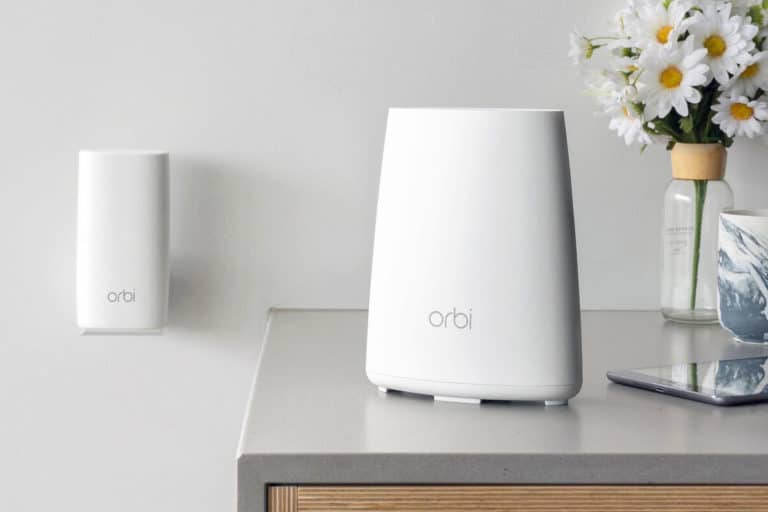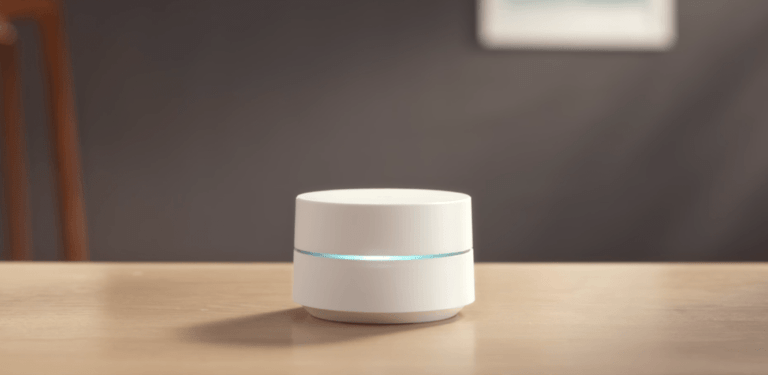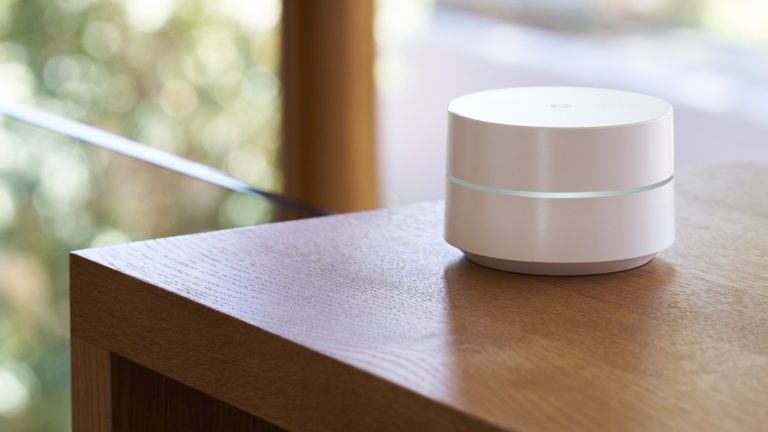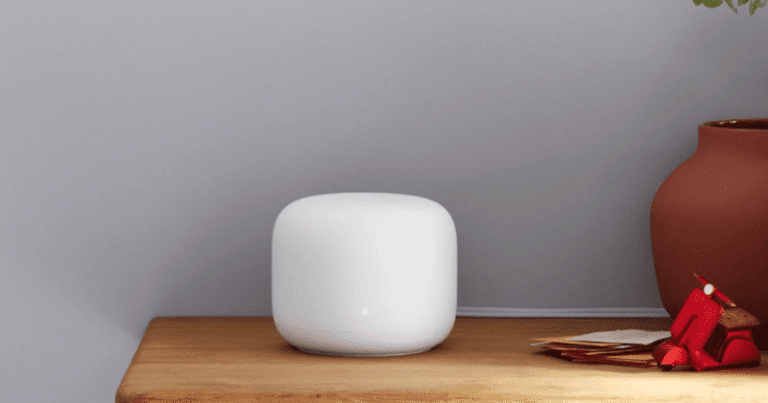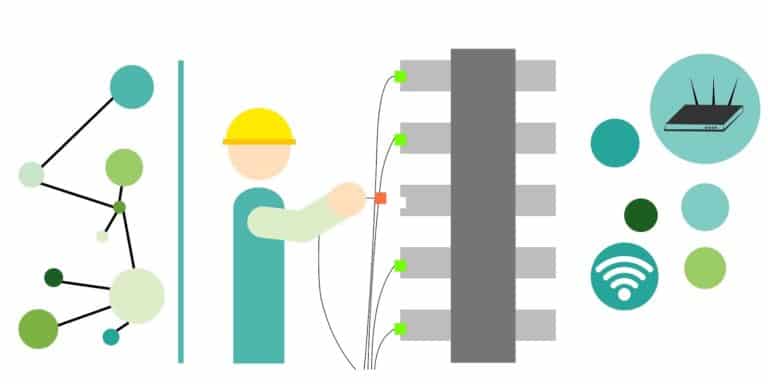Eero Pro 6 vs Eero Pro 6E: Should You Upgrade?
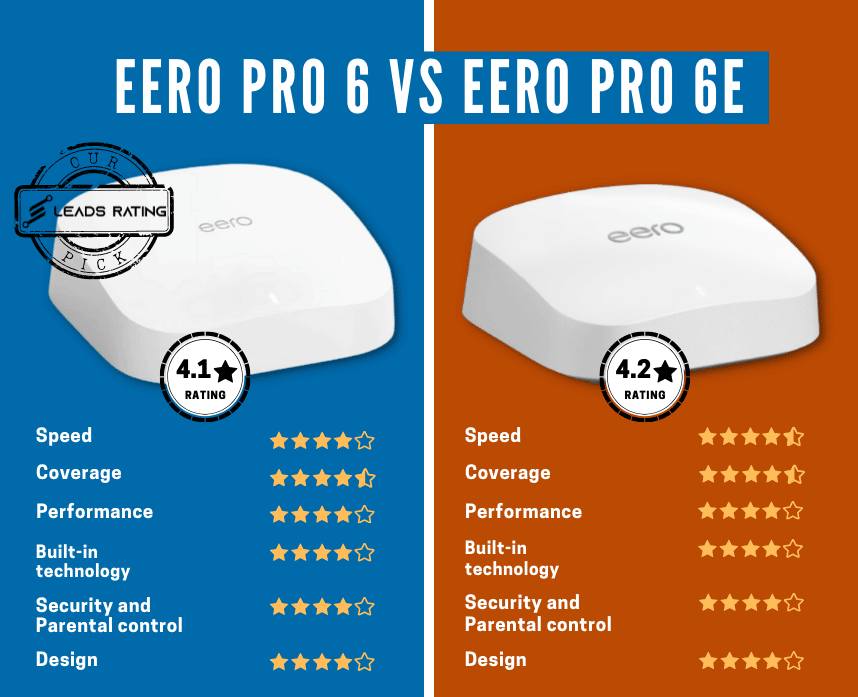
Right now, Amazon Eero is one of the top picks when it comes to Wi-Fi 6 mesh systems. Aside from being cheaper than other meshes, they’re also a perfect fit for every home.
Eero Pro 6 and Pro 6E are two of Amazon’s high-end mesh networks. Both of them could handle Wi-Fi 6 devices. Plus, both provide optimum gigabit speeds.
Ideally, both of them are very nice additions to your smart home. The Eero Pro 6 is great for large homes that need reliable Wi-Fi throughout. But, if you’re someone who wants to future-proof their homes, then the Eero Pro 6E is an excellent choice.
In this Eero Pro 6 vs Eero Pro 6E review, let’s see which mesh system is best for you. Let’s jump in!
Table of Contents
Eero Pro 6 vs Eero Pro 6E In a nutshell
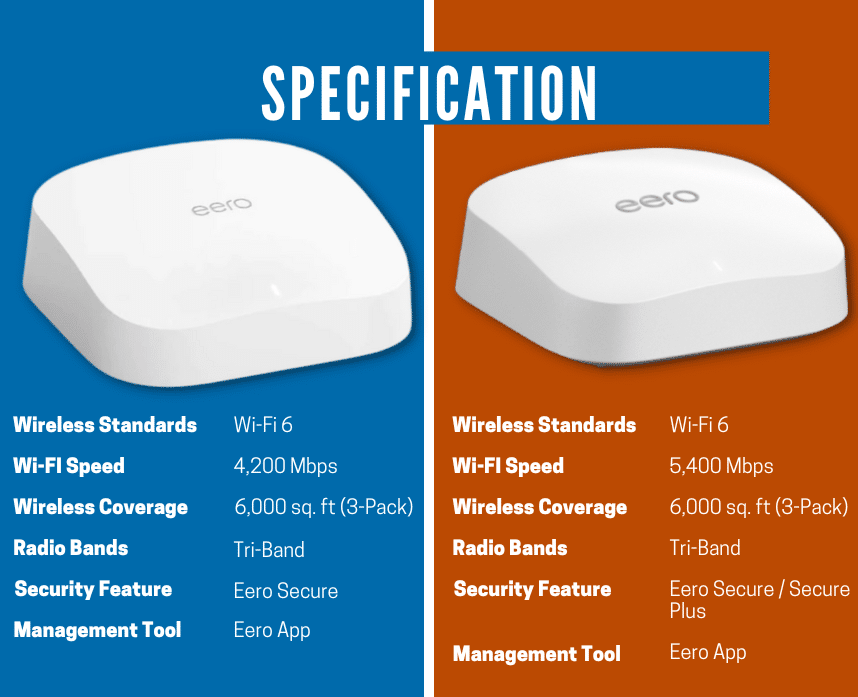
| SPECIFICATION | Pro 6 | Pro 6E |
| Wireless Standards | Wi-Fi 6 | Wi-Fi 6E |
| Wi-FI Speed | 4,200 Mbps | 5,400 Mbps |
| Wireless Coverage | 6,000 sq. ft (3-Pack) | 6,000 sq. ft (3-Pack) |
| Radio Bands | Tri-Band | Tri-Band |
| Security Feature | Eero Secure | Eero Secure |
| Management Tool | Eero App | Eero App |
Both of these routers came out on top of our eero router review roundup.
The Eero Pro 6 is a tri-band mesh router that supports Wi-Fi 6 technology. It supports gigabit speeds, and its maximum throughput goes up to 4,200 Mbps.
Meanwhile, the Eero Pro 6E is also a tri-band mesh router, but it supports Wi-Fi 6E.This means it supports an ultrawide 6GHz band, unlike other tri-band mesh systems. Its radio bands are as follows:
- 2.4 GHz band
- 5 GHz band
- 6 GHz band
Additionally, it supports gigabit speeds on both Wi-Fi 6 and Wi-Fi 6E devices. Its maximum throughput goes up to 5,400 Mbps. So it can provide optimum speeds to all connected devices.
On top of those, the Eero Pro 6E has an ultra-fast 2.5-gigabit ethernet port. So this prevents data transfers from bottlenecks and other network traffic.
The 3-pack kit on both mesh networks covers up to 6,000 sq. ft. Then a single router covers 2,000 sq. ft. So, both are perfect for large homes and offices that need fast and reliable speeds.
Lastly, both of them are backward compatible. So if you’re planning to upgrade from an old-generation Eero, you can mix and match them to suit your needs. Plus, it’s so much cheaper, and it’s eco-friendly too!
Performance
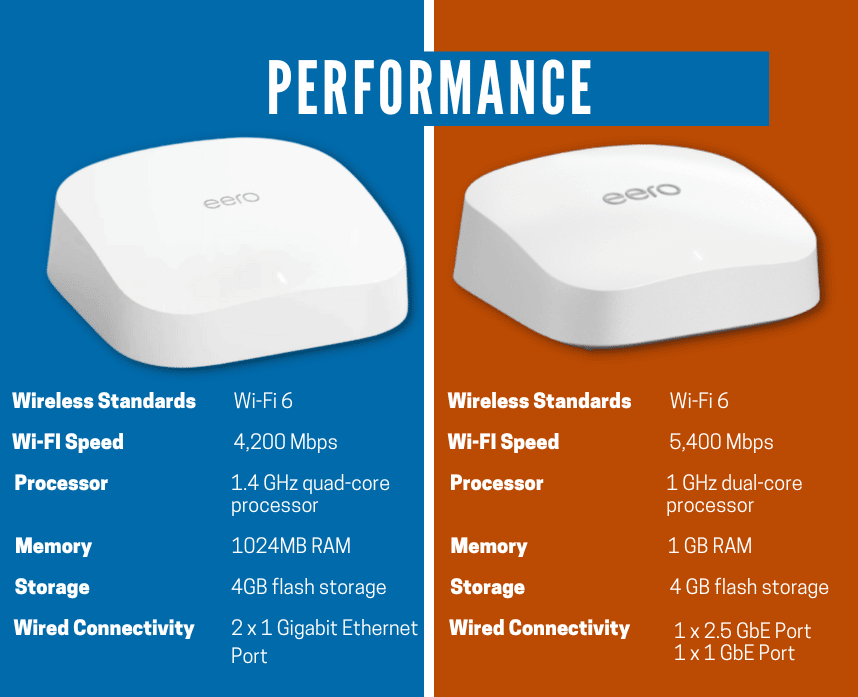
| SPECIFICATION | Pro 6 | Pro 6E |
| Wireless Standards | Wi-Fi 6 | Wi-Fi 6E |
| Wi-FI Speed | 4,200 Mbps | 5,400 Mbps |
| Processor | 1.4 GHz quad-core processor | 1 GHz dual-core processor |
| Memory | 1024MB RAM | 1 GB RAM |
| Storage | 4GB flash storage | 4 GB flash storage |
| Wired Connectivity | 2 x 1 Gigabit Ethernet Port | 1 x 2.5 GbE Port 1 x 1 GbE Port |
Right off the bat, Eero Pro 6 offers slightly high memory and capacity. It has a 1.4 quad-core processor and a whopping 1024MB RAM.
To see which is better, we’ve put both of these mesh networks to the test. During the speed test, we used two configurations: a wired backhaul and a wireless backhaul.
Important note: Your current internet plan limits the speeds you can get. To fully maximize the capacity and speed, you need gigabit internet speeds or higher.
Eero Pro 6
The Eero Pro 6 only supports Wi-Fi 6 devices. So we compared the performance and speed of a Wi-Fi 6-compatible device on a wired and wireless backhaul configuration.
On a wired backhaul, the speeds went up to 900 Mbps, and it didn’t go lower than 600 Mbps. Ideally, the closer you are to the router or satellite, you’d get faster speeds. But getting 600 Mbps if you’re a few feet from the router isn’t bad either.
Whereas on a wireless backhaul, the internet speeds slowed by 22% – 33%. The speeds spiked up to 700 Mbps and didn’t go slower than 400 Mbps.
Although slower internet signals are expected when you use wireless backhauls for any mesh Wi-Fi system. It’s because each node communicates wirelessly.
Read: Eero Pro 6 Review
Eero Pro 6E
With a wired backhaul, Wi-Fi 6E compatible devices got max speeds up to 1.4 gigabits and didn’t go lower than 900 Mbps.
Then, Wi-Fi 6 devices like the iPhone 13Pro Max got max speeds up to 990 Mbps and didn’t drop below 700 Mbps.
On a wireless backhaul, Wi-Fi 6E devices got 600-500 Mbps speeds. Then, Wi-FI 6 got around 500-400 Mbps. Although the speeds have significantly dropped, it’s still very impressive!
What’s also interesting is the incredible wireless range on this device. Because even at 100 ft. away from the mesh router, it still provides 100-200 Mbps.
Read: Eero Pro 6E Review
Features and Design
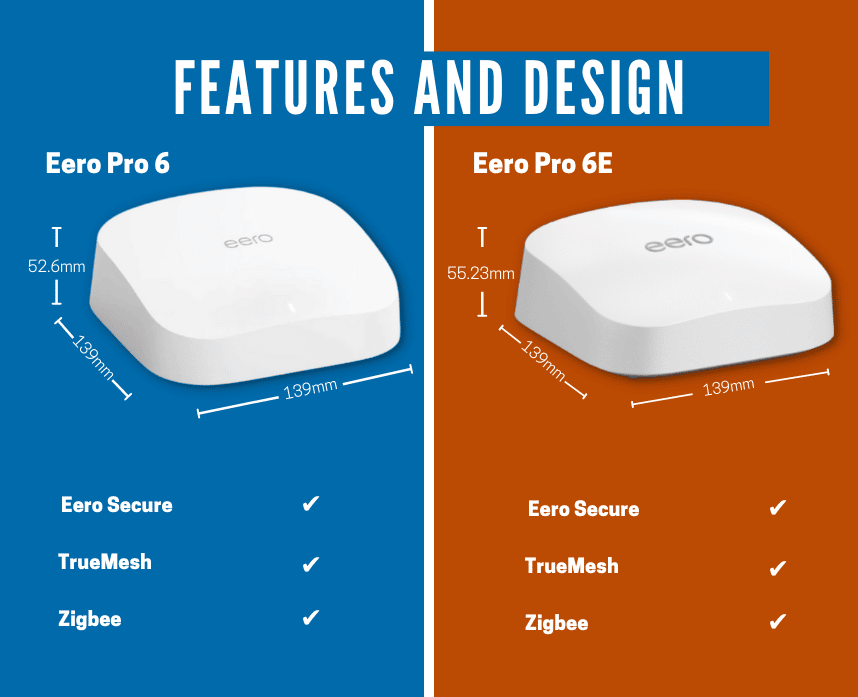
| SPECIFICATION | Pro 6 | Pro 6E |
| Dimension | L: 99.4mm x W: 97mm x H: 61.5 mm | L: 99.4mm x W: 97mm x H: 65.9 mm |
| Eero Secure | ✔ | ✔ |
| TrueMesh | ✔ | ✔ |
| Zigbee | ✔ | ✔ |
Design-wise, aside from the size, there’s not much improvement from the old Eero 6 to the Pro 6E. Both mesh routers have Eero’s signature plain, white plastic look with the Eero logo on top.
Eero Pro 6E is slightly taller, and the logo on top is slightly bigger and bolder. It also has one 2.5 GbE port, which transfers data much faster than a gigabit port.
Apart from that, these two mesh models have 2 ethernet ports and a USB-C port at the back for the power supply.
Additionally, if you want an added layer of security and parental control feature, you can pay for an Eero Secure subscription.
Eero Secure and Eero Secure Plus are your mesh’s security software. It offers site blocking, ad blocking, threat protection, and more.
Lastly, it comes with a built-in Zigbee smart home hub radio. It lets you control compatible smart home devices through the app or Alexa’s voice commands.
Setup Process
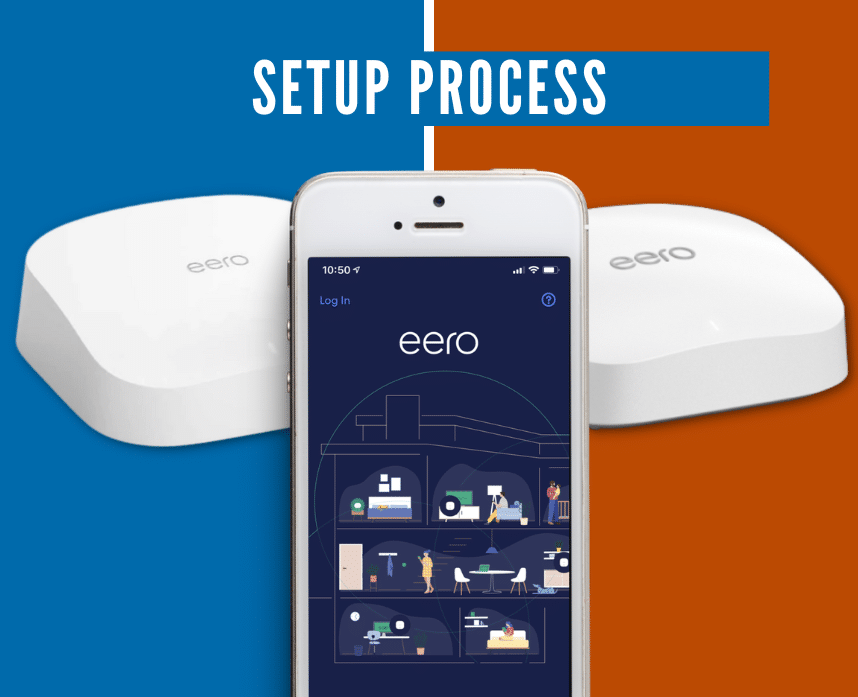
Whether you’re planning to get either the Eero Pro 6 or Pro 6E, we can assure you that setting up is easy!
Eero is made for convenience! You only need the Eero app on your iPhone or Android device to have your new mesh network up and running.
When you download the app on your mobile device, you’ll be guided all the way through the setup process. But here’s a quick setup guide for you:
- Install the application on your phone.
- Sign in using your Amazon or Google account.
- Prepare your gateway router, modem, ethernet cable, and Bluetooth.
- Follow the guide on the app.
- Let the app scan existing Eero devices for a few minutes.
- Set your network name and enter the password.
And just like that, your new mesh network is up and ready to use!
If you want to skip manually connecting your smart home devices to your new mesh network, use the old network name and password during setup. It’s case-sensitive, so you make sure everything is the same.
Pros and Cons
Overall, the Eero Pro 6 and Pro 6E are competitive mesh router systems with their own competitive edge. So here’s a list of the pros and cons and why you should buy it or not.
Eero Pro 6 Pros and Cons
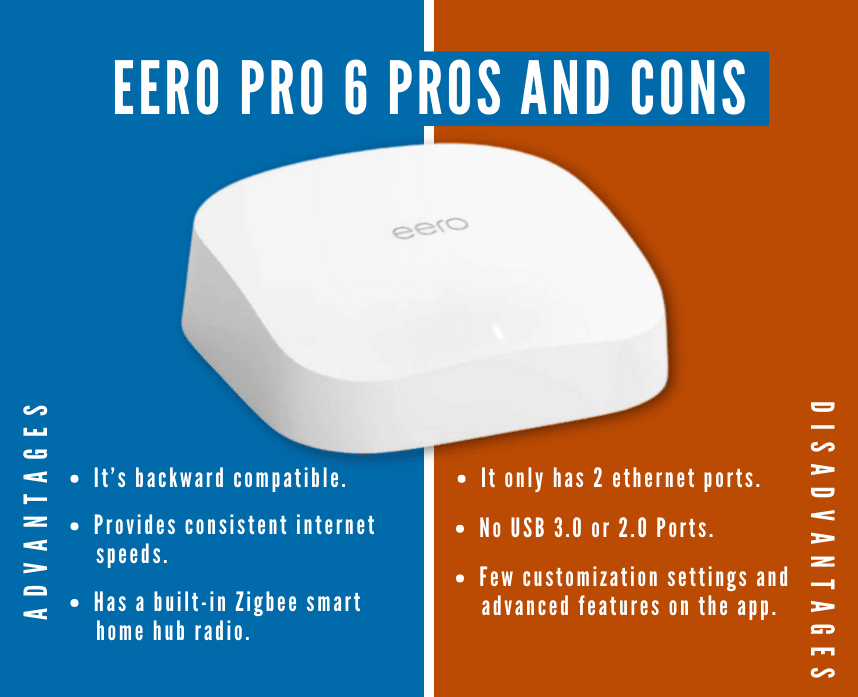
| PROS | CONS |
| It’s backward compatible. | It only has 2 ethernet ports. |
| Provides consistent internet speeds. | No USB 3.0 or 2.0 Ports. |
| Has a built-in Zigbee smart home hub radio. | Few customization settings and advanced features on the app. |
You should definitely buy the Eero Pro 6 if you want to upgrade from the previous Eero generation. It offers faster speeds, broader wireless coverage, and more reliable internet signals.
It’s also a great mesh to use if you have gigabit internet plans at home.
However, we can’t fully recommend it if you want to use it for gaming. Given the limited number of ports and customization options, it will not give you the best gaming experience.
Eero Pro 6E Pros and Cons
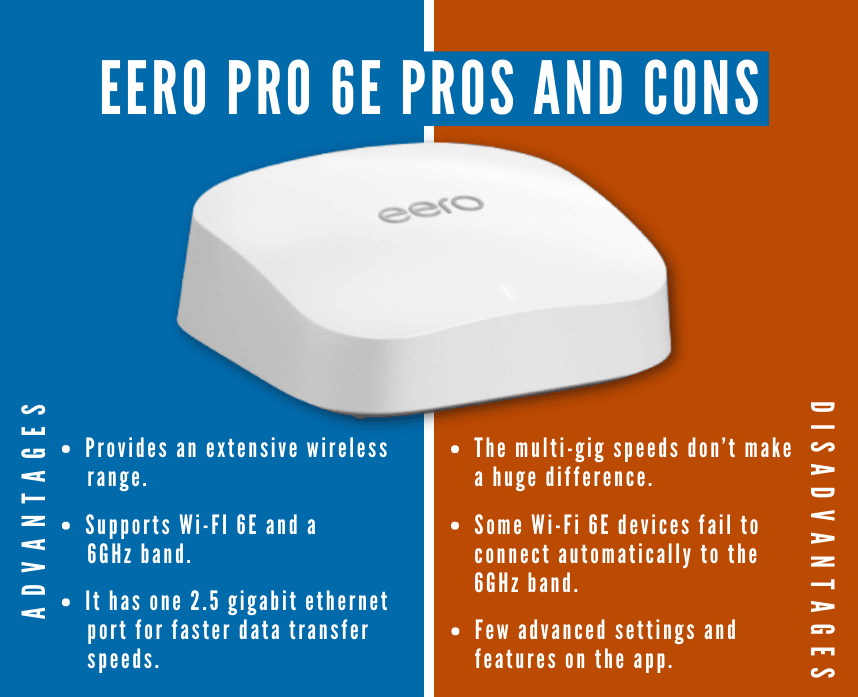
| PROS | CONS |
| Provides an extensive wireless range. | The multi-gig speeds don’t make a huge difference. |
| Supports Wi-FI 6E and a 6GHz band. | Some Wi-Fi 6E devices fail to connect automatically to the 6GHz band. |
| It has one 2.5 gigabit ethernet port for faster data transfer speeds. | Few advanced settings and features on the app. |
If you want to future-proof your home from the surge of Wi-Fi 6E devices, you should get the Eero Pro 6E. It’s a great tool to keep yourself updated with technological advancements. Plus, not having a Wi-Fi 6E-ready internet network is such a bummer.
But, using it for gaming or multi-streaming purposes isn’t very ideal. Unless, you’re willing to buy an additional ethernet switch to support multiple wired connections.
Another thing is, you can’t fully maximize the multi-gig speeds on this mesh router. As mentioned above, it provides 1.4 gigabit speeds at best.
So if you want to get the full 2.5-gigabit speeds, you can get another router with 2 or more 2.5 GbE ports. Then, you use it as a gateway router to connect it to your Eero devices.
The Final Verdict: Eero Pro 6 Wins
Both the Eero Pro 6 and Eero Pro 6E are great mesh networks, and they really come in neck and neck. While the Pro 6E has a slight advantage, we personally think the Eero Pro 6 is a much better choice.
It offers almost similar speeds and performance as the Pro 6E. Plus, it’s perfect for whatever devices you have right now.
Although having a multi-gig speed router at home sounds amazing, we believe we’re still a few years off from having multi-gig speeds available in every home.
We hope our Eero Pro 6 vs Eero Pro 6E review helps you to choose the best mesh network for your homes. Check out amazing deals on Amazon here.
Related Articles:

